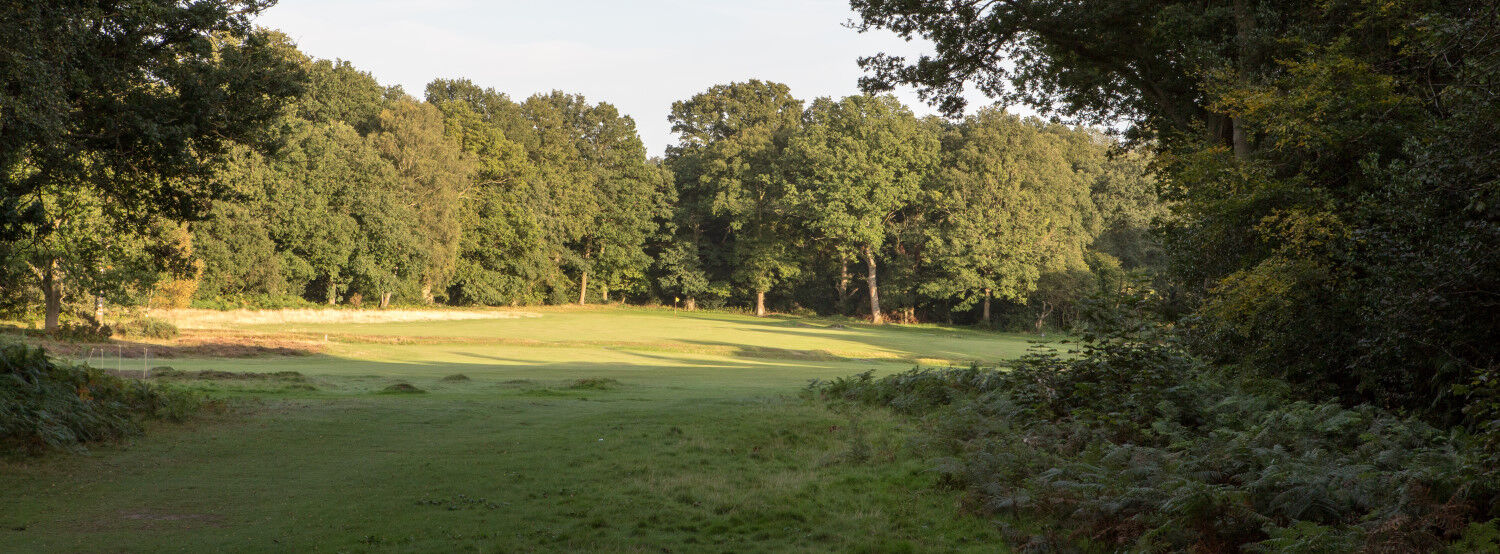Taken from Golf Illustrated
January 31st 1902
The Limpsfield Chart Golf Club
A FAVOURITE COURSE OF THE GOLFING LONDONER
The first man to practically recognise the great suitability of Limpsfield Chart for golf was a Scotsman, in the person of Mr A. M Bell, who about fourteen years ago resided at the Manor House, Limpsfield. Mr Bell laid out the links, but in a short time had to leave Limpsfield. The game he had established, however, continued to flourish, being taken up so keenly that the spring of 1889 saw The Limpsfield Chart Golf Club fairly launched, with a strong and influential committee.
The course, which is of nine holes, was laid out under the supervision of Peter Paxton then at Eastbourne, and having got it into some semblance of order, on the 29th June 1889, the first competition was held. The event was a great success, some 160 spectators being present.
Next year, 1890, a small but picturesque club-house was built the cost being generously defrayed by two members. The same year saw Douglas Rolland engaged as professional. Rolland remained at Limpsfield for four years, the course rapidly improving under his care.
The Club House
LCGC clubhouse the only Victorian structure of its kind that has been in continuous use since 1890
He was engaged in numerous professional matches while at Limpsfield, encountering the late Hugh Kirkaldy, J.H. Taylor, Peter Paxton, and many others. On June 9th 1894, Rolland played “young” Willie Park a 36 hole match, at Sandwich, for £50 a side winning by 3 up and 2 to play. On June 11th and 12th he took part in the Open Championship, held at Sandwich, in which he secured second place, being beaten by J.H. Taylor by five strokes.
On the following Thursday and Friday he competed in a match play tournament arranged by the St. George’s Golf Club, between eight amateurs and eight players. After some terrific fights Rolland reached the final heat, therein defeating J.H Taylor by 2 up and 1 to play. Such a performance for one week speaks well for Limpsfield’s first professional and the members would have delighted to welcome him back to their picturesque course. That was not to be for Rolland “went on his way” and the Limpsfield members saw him as their professional, no more.
In 1897 the comfort of the members was increased by the building of additional rooms to the club house, to mark the formal opening of the June 30th , a 36 hole match for a subscription purse was played between Rolland, then of Bexhill, and J. Rowe of Forest Row. Rolland was nothing like in his old form, and suffered defeat by 7 and 5.
The course extends over a portion of of a large common, part of the waste lands of the manor of Limpsfield. It is about 500 feet above sea level and the air, at all seasons of the year is pure and bracing.
The surface of the course is undulating, and the subsoil either sand with loamy clay beneath, or loam. The turf in general is of the short springy sort, upon which a golf ball “sits up” well ; Incomparably better than on the heavier grass to be met with on many courses.
The putting greens are decidedly above average for inland. In short, assuming all inland links to be but substitutes for the seaside article, assuredly the links of Limpsfield are of the best class of substitute.
Fine views present themselves from various points of the course, especially to the south west corner, whence the eye ranges over large tract of the Surrey Weald stretching away towards Leith Hill. This however is getting on delicate ground, for was it not at Limpsfield that a fine old golfer of the north, on his attention being directed to the beauties of the landscape sternly replied:
Sir, when I am playing golf I have no time to notice scenery
We give a description of the short original course which affords capital and , at the same time, not very difficult golf.
The tee on the first hole (239 yards) is near the club house, on the south side of the high road from Limpsfield to Westerham. There are no hazards in the direct line and the approach is downhill. There is a road and rough ground either side, and beyond the green.
At the second tee a deep disused gravel pit must be carried, and an old dyke running across the course has to be negotiated with the second. The approach is unguarded. (356 yards).
Much rough ground, bracken and whins* have to be cleared at the third with a tee shot. Danger may be avoided by playing round a little to the right. (193 yards)
At the fourth, the ball has to be lofted onto the green, over some thick masses of whin. (140 yards)
The fifth is a plain almost level hole, the one nostrum to be observed being, “keep in line.” (300 yards)
The tee shot from the sixth has to clear some heather, scrub and whins. The approach is downhill, and there are great possibilities of grief for a ball which overruns the green.
A legend of the Chart is that Douglas Rolland once drove over the seventh hole (a distance of 227 yards) off the tee, his ball running on the road beyond the green. Ordinary golfers, however have to exercise great care, two old roadways, hollowed out some feet below the surrounding level , running parallel in front of the green.
A large bunker having much whin in it, and in wet seasons holding no small amount of water, run across the course about 40 yards short of the eighth green . It requires care, but is about the only difficulty likely to be met at this hole (325 yards).
The ninth presents no terrors, the way being very easy.
An extension of the above course was made in 1890, forming what is now known as the long course. Two new hole (345 and 318 yards respectively) were made, hazards and whins utilised, and cart ruts laid out to the north of the Limpsfield – Westerham Road.
Monthly and quarterly medals are played for, and the club hold two competition meetings annually – in the spring and autumn. The only club prize competed for at the two meetings is the Warde Cup, a challenge prize for the best scratch score made on the day of the spring meeting, presented by the president, Colonel C.A.M. Warde, who has held his present office since the commencement of the club.
Both courses continue to be used at different times for club competitions, the best records being, for the long course, 81, made by Mr G.N. Watney, in the monthly medal completion on March 2nd 1901; and for the short course 77, made by Mr J.S. Scott in a similar competition on November 2nd 1896.
Mr Charles Leveson-Gower is the present captain of the club, of which the membership is limited to 135, not including the ladies who are members, and amongst whom are to be found some very accomplished players.
The secretary is the Rev. F.W. Parsons, one of the founders of the club.
Alfred Nash, who succeeded Rolland as professional in 1894, is a good teacher of the game and bestows careful attention on the upkeep of the course and greens.
The railway station nearest the links is Oxted, a mile away, on the London, Brighton and South Coast Line. Conveyances can always be obtained at the station.
With more than ample room on the manorial common for a course of the orthodox number of holes, it appears strange that LImpsfield remains a nine hole links particularly as the lord of the manor is the captain of the golf club, and the commoners, it may be presumed in this year of grace, fully alive to the advantages conferred on a neighbourhood by a good course.
The conclusion is that the members of the Limpsfield Golf Club are perfectly satisfied with their existing club and links. Very possibly they are quite right.
Visitors the Limpsfield links may be assured of a hearty welcome. This fact and the close proximity of the course to the metropolis probably accounts for the large and increasing number of Londoners who are in the habit of visiting it.
The photographs given here may be taken as illustrating the long or extended, and not the original short one.









